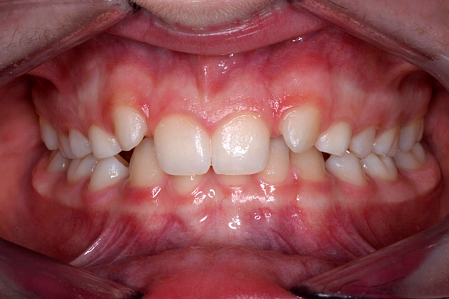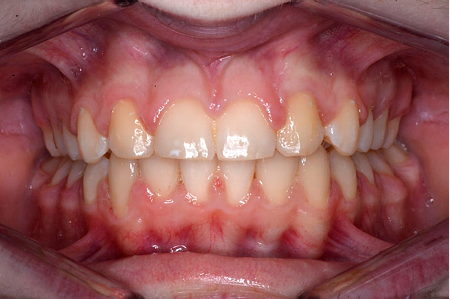Some people present with missing teeth, a condition known medically as, Hypodontia.
Hypodontia condition affects 2-6% of the population, people with this condition usually self-refer themselves as they are aware that some teeth are missing or the dentist usually refers them for specialised orthodontic toot movements. Orthodontic tooth movements is usually needed to make space or decrease the space available. The main reason for missing teeth is commonly due to failure of formation of the teeth during their formation stages.
This condition can present itself as 1 missing tooth in the whole mouth to many missing teeth which can be more obvious even to the untrained eye.
Is hypodontia hereditary?
Most times this condition is hereditary, however it can occur in children without a family history. Siblings are usually affected in a similar manner however it can also affect one of the siblings, for parents with more than one child.
It most commonly affects the adult teeth, but in rare cases the ‘baby’ or ‘milk’ teeth are also missing.
Is hypodontia linked to other diseases?
The best advice is that you ask your general dentist about the condition as it might be part of other medical conditions.
Hypodontia is often associated with other dental anomalies such as small-sized teeth, delayed eruption of teeth, ectopic teeth (teeth developing in the wrong place) and lack of jaw bone which is very relevant in case the patient needs dental implant placement during adulthood.
Treatment of missing teeth and hypodontia
It is recommended that you look for specialists that can manage this condition. As mentioned above, a very important team member, is the specialist in orthodontics, which is the initial step in achieving a great smile.
Before and after missing teeth replacement


How we can help at 128 Harley Street, London W1
- At the initial assessment appointment you are seen by Dr Stefan Abela and a detailed plan will be outlined for you.
- Other team members that have expertise in replacing tooth gaps and placing dental implants will play a vital role following the orthodontic treatment.
- Dr Milisha Chotai will guide you through this process once you are ready to have the gaps filled with prosthetic teeth.
- There could be an interim period where dentures are used to allow the teeth to “settle”, usually followed by bridges and/or dental implants.
- The majority of implants are placed after skeletal growth is completed. They may require bone grafting surgery to develop the site prior to implant placement.
Dr. Stefan Abela
BChD, MFDS, RCS Eng, MSc, MORTH RCS Ed, AHEA, FDS Orth RCS Ed
Stefan is a Consultant in Orthodontics at one of the most prestigious London teaching hospitals; Guy’s and St Thomas NHS Foundation Trust.
Stefan is also a specialist in Orthodontics and is registered on the General Dental Council (GDC) specialist list. Stefan qualified as a dental surgeon in 2003 and underwent further training in various specialties including restorative dentistry, paediatric dentistry, oral medicine and complex oral and maxillofacial surgery including the management of facial trauma.
